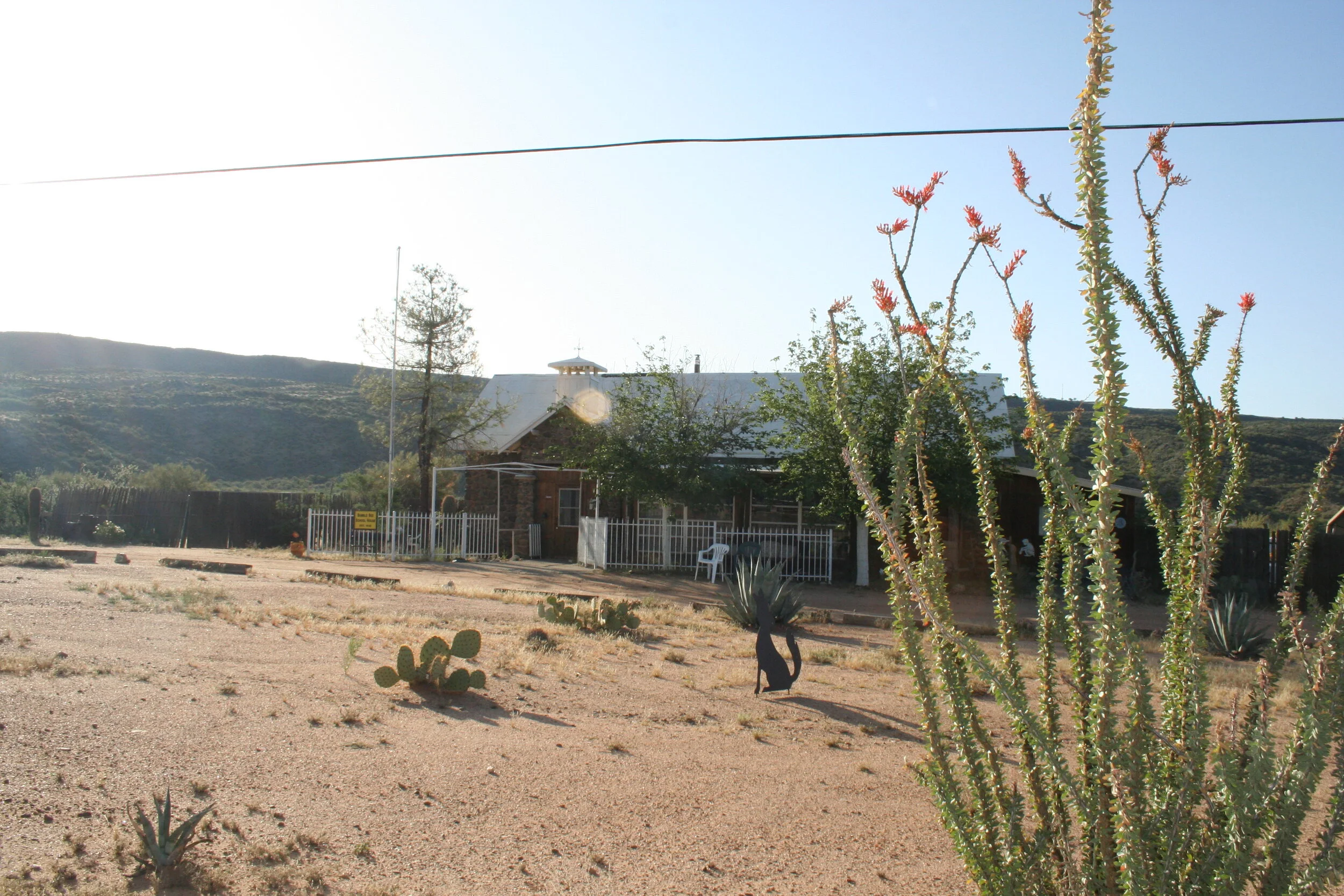Yavapai County
Bumble Bee, AZ
Once a stagecoach stop, this small ranching community remains today along CK Road.
Bumble Bee, Arizona is now all but a ghost town; however, it’s not always been this way. Once, Bumble Bee was a stage stop but over the years, the population has dwindled, leaving only a few fulltime residents. Bumble Bee is easily accessible via 5 easy dirt road miles off of exit 248 on the I-17. Bumble Bee is also thought to be the nearest town to the geographical center of Arizona.
The area around Bumble Bee is thought to be one of the first explored in the Bradshaw Mountains. Mexicans and Americans passed through the area and William Bradshaw came here in search of gold, which he found in the nearby Turkey & Black Canyon Creeks. The first known building in Bumble Bee was a small adobe building which sat along Bumble Bee Creek. It helped serve stage-coach traffic between Prescott and Gillette/Tip Top, and Prescott and the small town of Phoenix. A post office was established in February of 1879. In June of 1880, possible Bumble Bee’s most known resident, Warner W. Snyder took over the post office. He also ran a stagecoach station. Just a year later, Wickenburg’s famed Henry Wickenburg moved from his Vulture mine to Bumble Bee to start the Iconoclast Mine.
In 1888, the post office was discontinued but reinstated that same year. Mining ‘came back’ and mines were being worked all around Bumble Bee. Names like the Ballard Brothers, Webb, McFee, and even George Middleton (who would discover the DeSoto later in life) all worked different mines near Bumble Bee.
Next, we see Jeff Martin, who owned a store in Black Canyon City, then called Canon, move to Bumble Bee to ranch. He later built another store in Bumble Bee. Foreclosure issues during the Great Depression forced martin to sell one store. He sold his Black Canyon City store thinking Bumble Bee would prosper, but he was proved wrong. Martin later rebuilt his store due to a change in roads, and he even added small rental cabins.
The main road was then moved again (from the ridge to the east to its current location) and a new bridge was built across Bumble Bee Creek in the 1930’s. Martin again moved his store to where it stands today. Martin sold a large amount of his land to the Cordes Family, who moved their “FF Ranch” here and now called it the Bumble Bee Ranch.
Bumble Bee’s last little bit of history comes when Charles A. Penn decided to build a fake ghost town near Martin’s store. “Crazy” Ed Chilleen was given a lease on Penn’s property in 1969. In November of that same year, 4,000 people arrived in Bumble Bee for the grand opening of a huge ‘fake ghost town’ and tourist attraction. But after a short period of excitement, Bumble Bee never became the tourist attractions Penn and Chilleen wanted it to be.
The source of the name for Bumble Bee is somewhat unknown, but there are three legends. The first is that early miners came across a beehive as they searched for gold. The second is that soldiers did the same thing. The third is that Army scouts stumbled upon an Indian meeting and all the chatter was similar to a bee hive. Whatever the real reason is, it is up to you to decide!
Bumble Bee now a days is all but a ghost town. Most visitors pass right through the small town on the way to Crown King. But nevertheless, Bumble Bee is a unique town with a unique name and a unique history!
Sources:
Wilson, Bruce M. Crown King and the Southern Bradshaws: A Complete History. Chandler, AZ: Crown King Press, 2002. 76-79. Print.
Trimble, Marshall. Roadside History of Arizona. 2nd edition. Missoula, Montana: Mountain Press Publishing Company, 2004. 198-199. Print.

